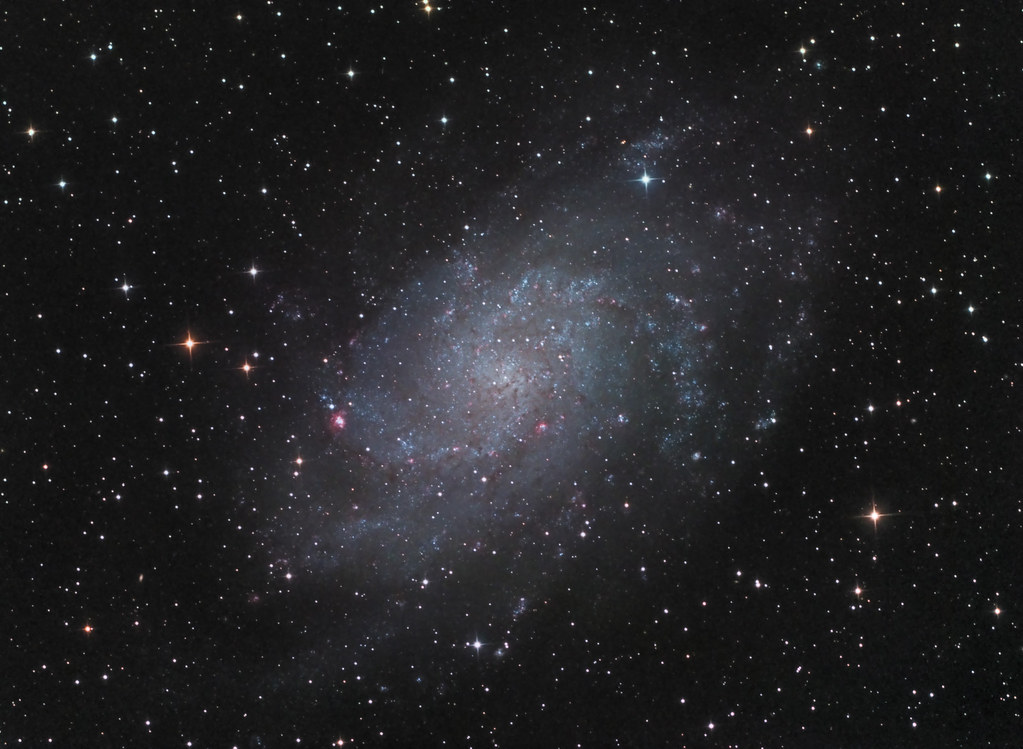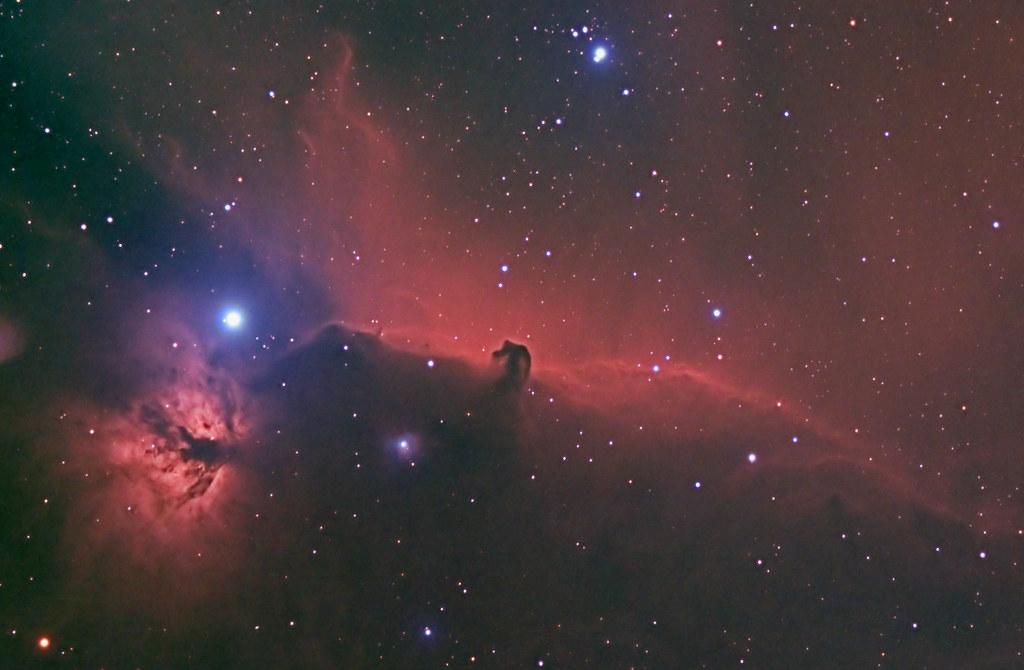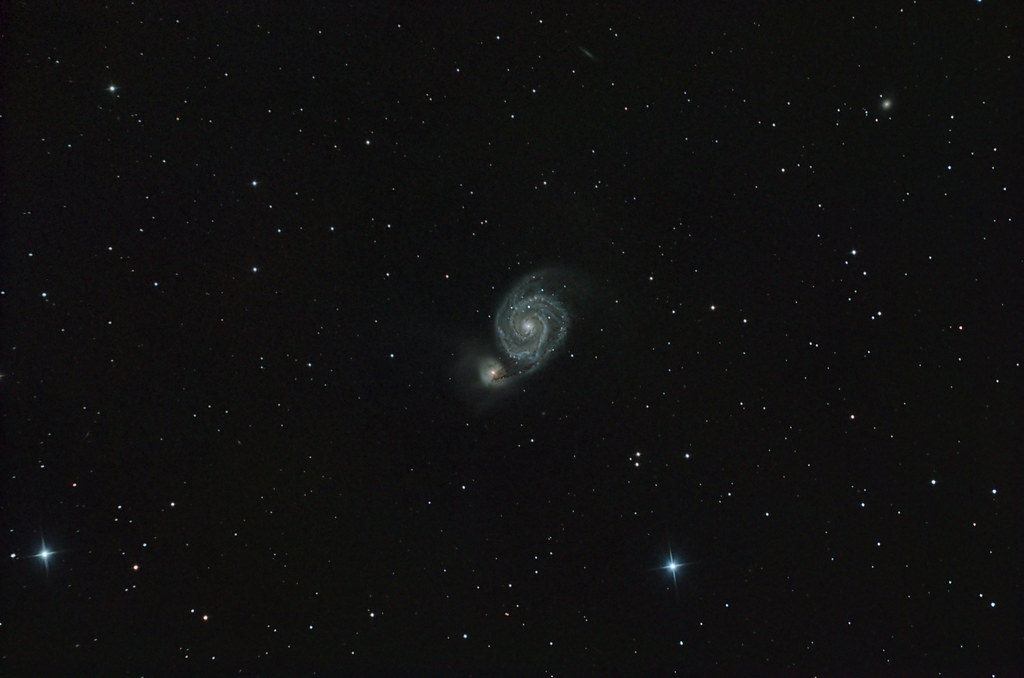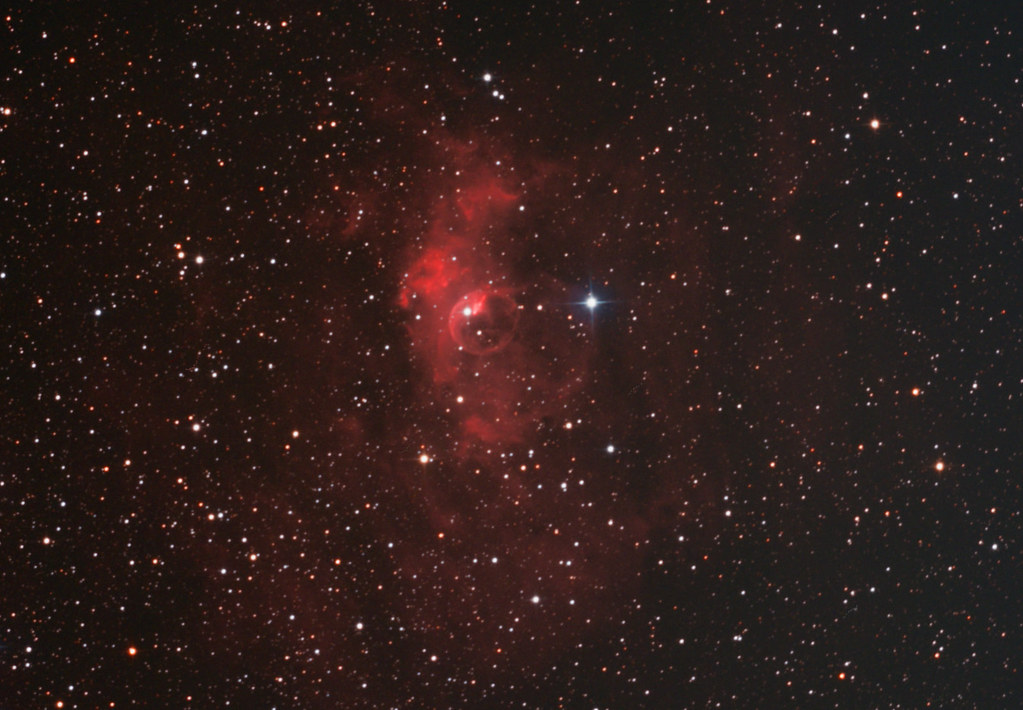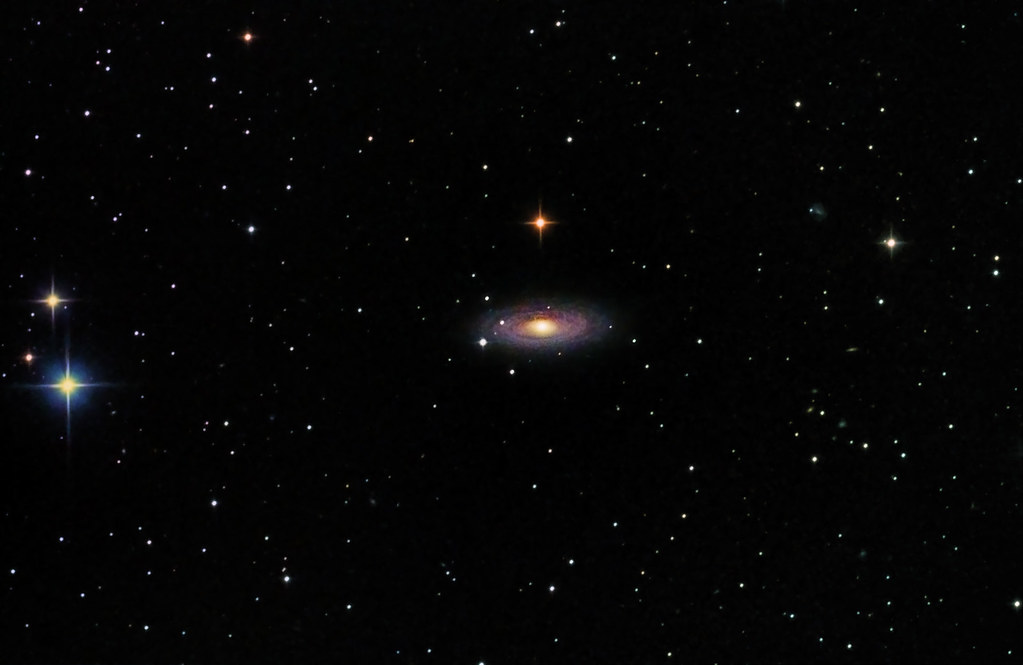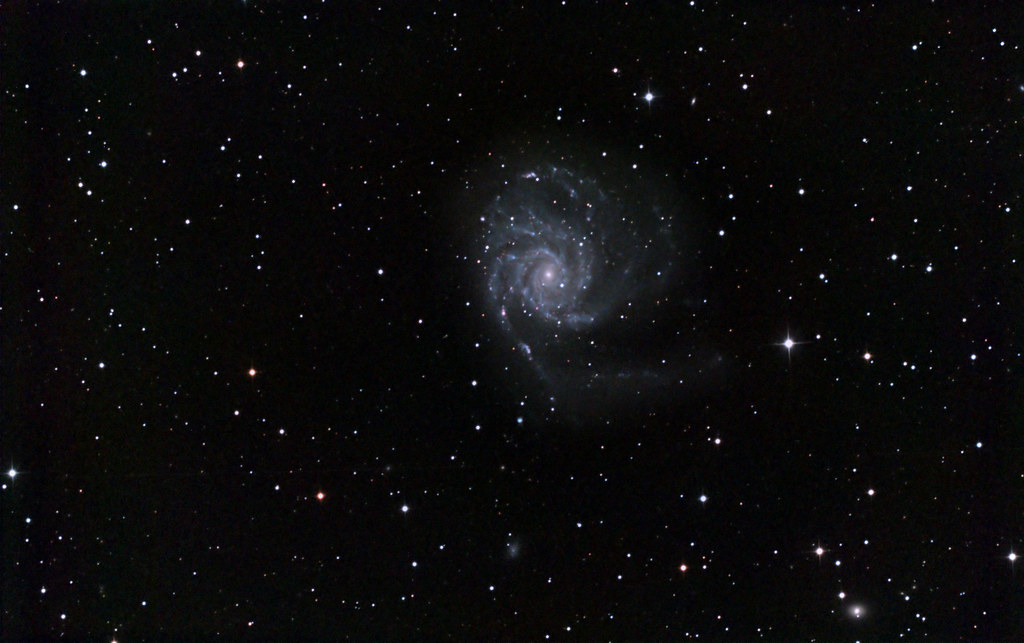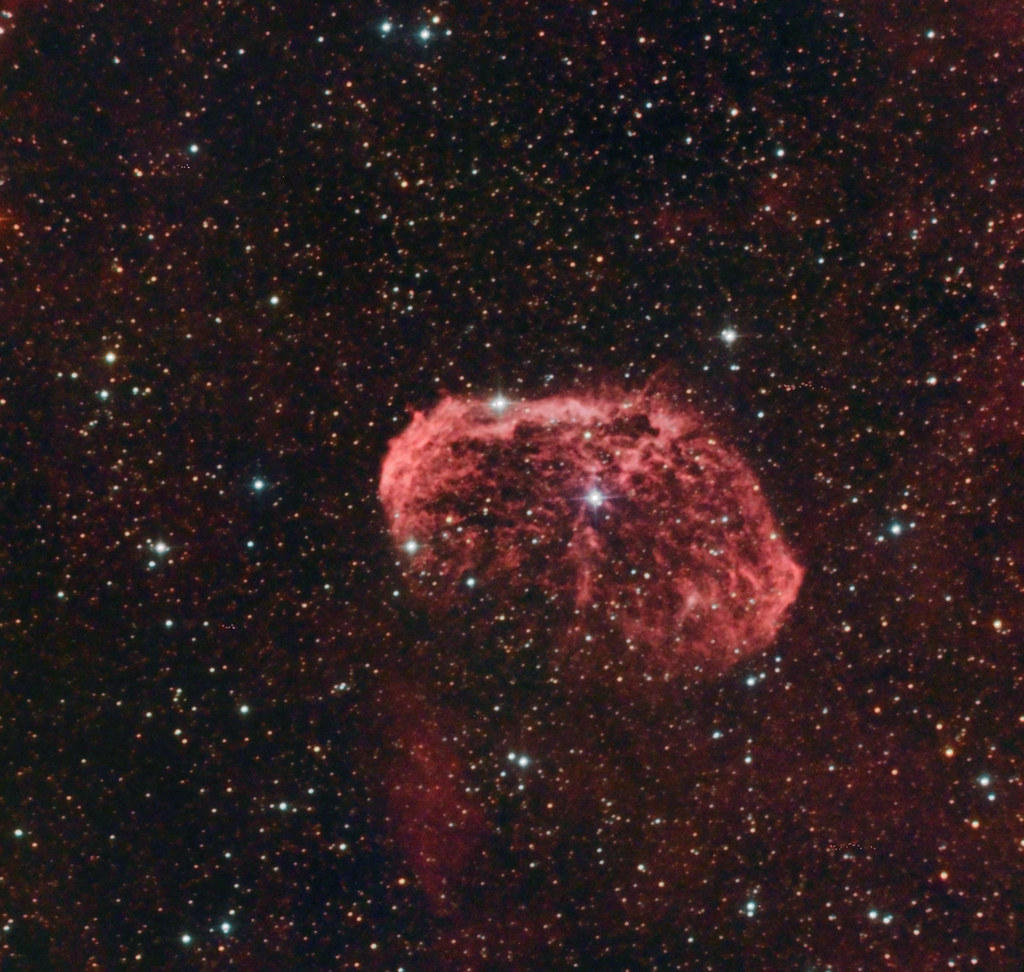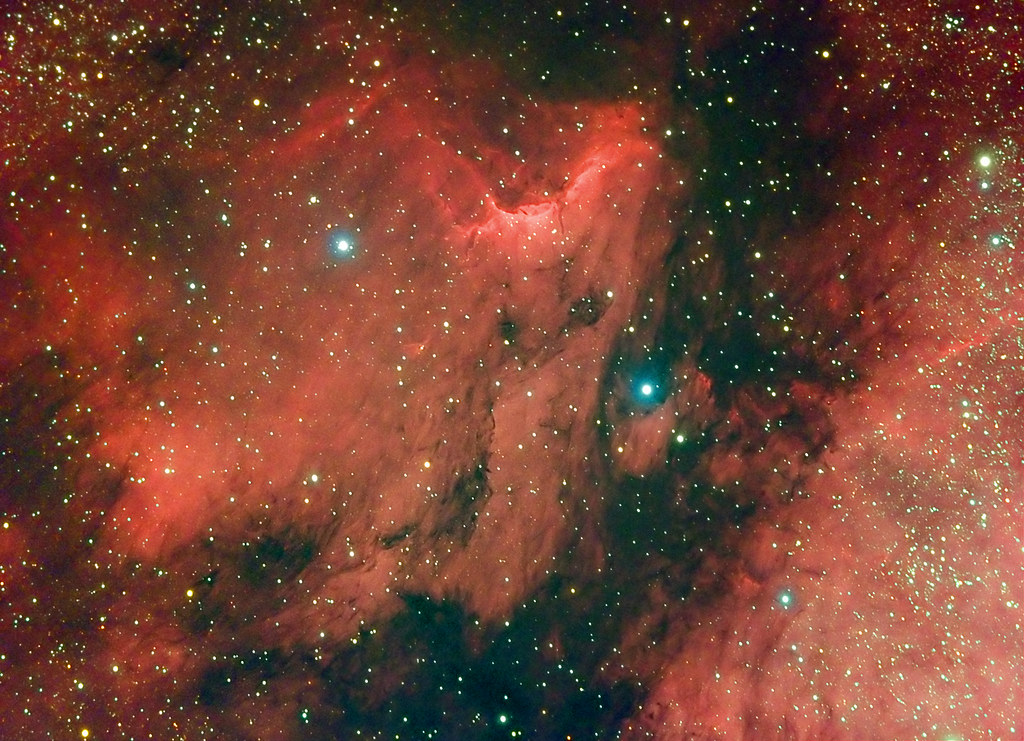Pogo made a request for more of my astrophotogaphy images in another thread.
I could totally see myself getting into this if I had the time and money.
I don’t, so I’ll have to confine myself to normal photography (which is plenty of fun anyway.)
Edit: You should carry around your pictures, and if anyone ever disagrees with you a, “These are pictures of distant galaxies I took, your point is irrelevant” would shut them up damn quick. ;)
Orion Nebula + the Running Man:
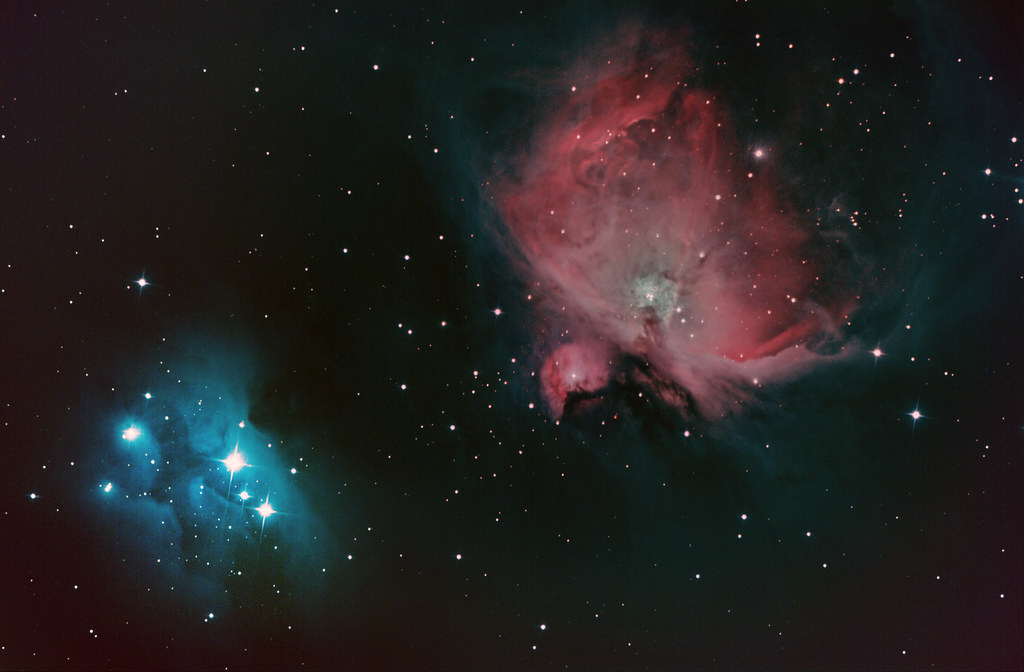
Dumbell Nebula (this object is very small, so unlike the rest this is a 100% crop)
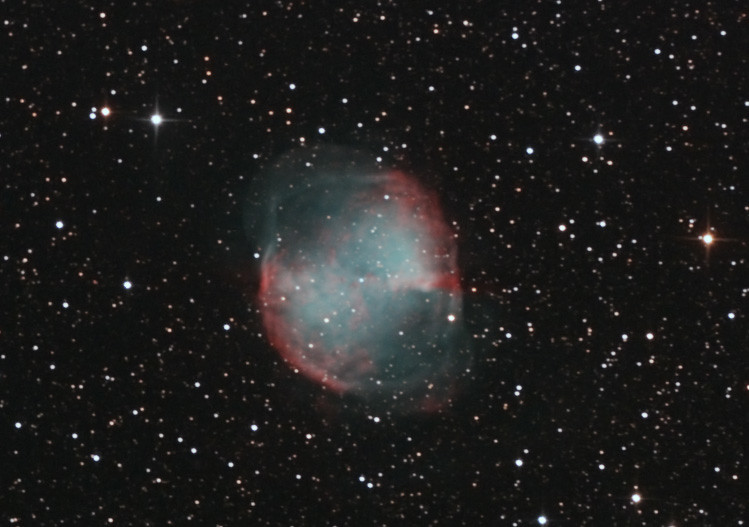
Awsome Gus, just awsome. Where do you shoot these?
From his private spacecraft, obviously.
OK, so by now, some of you are asking “how are you taking these?” And possibly “where?”
The short answer is that I take them in my backyard in a suburb of Boston, using a pair of telescopes. The wide-field images (i.e. Horsehead, Andromeda) are taken with a 500mm f/6.25 refractor. The smaller objects (i.e. M33, M51) are taken with a 1000mm f/4.9 Newtonian reflector. The images are mostly taken with a QHY8, which is a specialized, cooled camera for astrophotography, but my older ones (i.e. the Orion nebula) I took with a Canon DSLR.
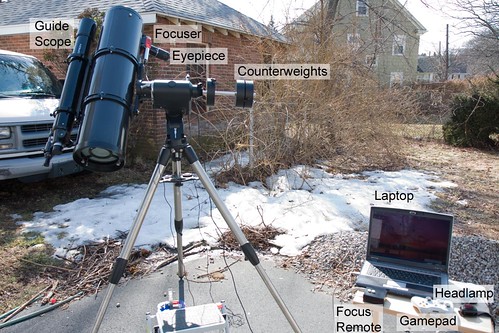
You can tell which images were taken with the larger, longer scope because the brighter stars have diffraction spikes. A Newtonian scope has 4 vanes holding a secondary mirror at the front of the telescope, and those produce the arms. A regular, refractive telescope doesn’t have that obstruction, so brighter stars are just bright circles.
You can find a more detailed breakdown of my equipment and workflow in a photo set on my Flickr page.
Astronomy images require a lot of post-processing, particularly with my heavily light polluted skies. I’ll capture 3-5 hours of data in a night, depending on conditions and when the object rises and sets that night. I throw out the frames which have excessive tracking errors, which can range from just a few on a good night, to 50% or more when things go poorly. I’ll then use software to combine the remaining frames into one long exposure, and more software to subtract the light pollution and stretch the luminance values that contain the object so they make up most of the 0-255 range of JPG images.
I use a light pollution filter when exposing RGB data, which is a broad-band filter which blocks many of the wavelengths used by artificial lights. This cuts about 50%-70% of the light pollution while cutting maybe 10% of the object light for broad-band objects light galaxies, and almost none for narrowband objects like nebulae. For emission nebulae (i.e. the Horsehead), I’ll also capture additional data using a 7nm hydrogen alpha filter. The blocks all light pollution, which drastically cuts down on noise and improves the detail I can capture, but gives me a monochrome deep red image. I’ll typically combine that data with the RGB data and use it as a luminance layer in photoshop to pick out the nebula details. I typically have to spend some time tweaking the saturation afterward, since a simple Ha + RGB combine gives you a salmon pink image.
This is an expensive, labor intensive hobby, with a steep learning curve. Focus in particular can be a real bear. How steep is the learning curve? Well, my first image of the Dumbell from 2006 looked like this:

Pretty. Thanks for the wallpaper!
OMG your telescope has a telescope!
Beautiful images, Gus.
Unbelievable. What’s the gamepad for?
If you’re interested in wallpaper-sized images, I should point out (if you haven’t figured it out already) that the images are also links to my Flickr page, and the Flickr page has the full-sized images, which are generally in the 2000 x 1800 range, depending on how I cropped them. M27 is not a great candidate because it’s already a very narrow crop.
Heh, and that has a telescope riding on the back, though I don’t use that finder anymore. In practice I use 3 telescopes (main, guide, and finder), plus a Telrad which isn’t a telescope but just a 1:1 sight.
Any astronomer is going to have multiple scopes in parallel, because most objects are very small. You can use low-power eyepieces for finding purposes - I use a 30mm / 80 degree 1rpd eyepiece for that - but for really gross aim, you want something with very low power and wide view. Hence the Telrad and the 8 x 50 finder scope.
For photography, you also want a guide scope. While the mount rotates to compensate for the Earth’s rotation, and it’s a precision instrument, it still makes errors. To fix that for 10 minute exposures, I have a guide scope and autoguider. The autoguider looks through the second telescope at a single star, and whenever it moves even the slightest bit, it sends control signals to the mount to correct for that movement.
Mount control. While the mount comes with a handset, it’s pretty limited, so I control the mount with the laptop, and I use an XBox 360 wireless gamepad to tell it what I want. Left joystick is directional control, A / B / X / Y controls slew speed (from 400x to 2x sidereal), bumpers control focus in / out, and right joystick controls focuser speed (slowest is a single 50 msec pulse of the focuser motor, I did mention focus is very unforgiving).
Wireless has been a huge help. I used to drag around two wired controllers (handset for mount control, handset for focuser control) and the cables would snag on things as I walked around the telescope. It sucks a lot to have to re-do star alignment because I’ve jostled the mount or yanked a cable.
Awe. Thanks
That’s really cool.
How far out of Boston are you Gus? I live just north of the city in Medford, and I’m lucky if I can see Jupiter with all the light pollution.
There’s no way I have the talent/cash to attempt this but I love looking at space and going “whoa”
I’m in West Roxbury. I’m a little farther out from the city center, but not much. Your comment about Jupiter is kind of surprising, since Jupiter is very bright (mag -2.9!), easy to spot if you know where the plane of ecliptic is. My skies are roughly mag 3, so Zeta Ursa Minor (the upper left corner of the ladle in the Little Dipper, always visible in the north) isn’t visible to me without a telescope.
Yes, it’s surreal how much it’s possible to capture, given that’s almost nothing is visible to the naked eye. Some of the images (depending on sky sector) are a real soup of stars with enough exposure time.
Naturally, I’d get much better results for RGB data at a dark site. With a cooled camera, my big enemy is noise in the data itself. I can subtract the light pollution, but the random noise in the light pollution never goes away. Some of these objects required a series of heavily-stretched 5 minute exposures just to frame correctly.
Wow, those are just amazing. To bad people can’t see these with the naked eye.
Yo dawg, I herd you like telescopes…
In all seriousness though, really cool stuff Gus.
Wow Gus. Awesome stuff. Looking at those pictures I figured you had access to a huge telescope somewhere.
